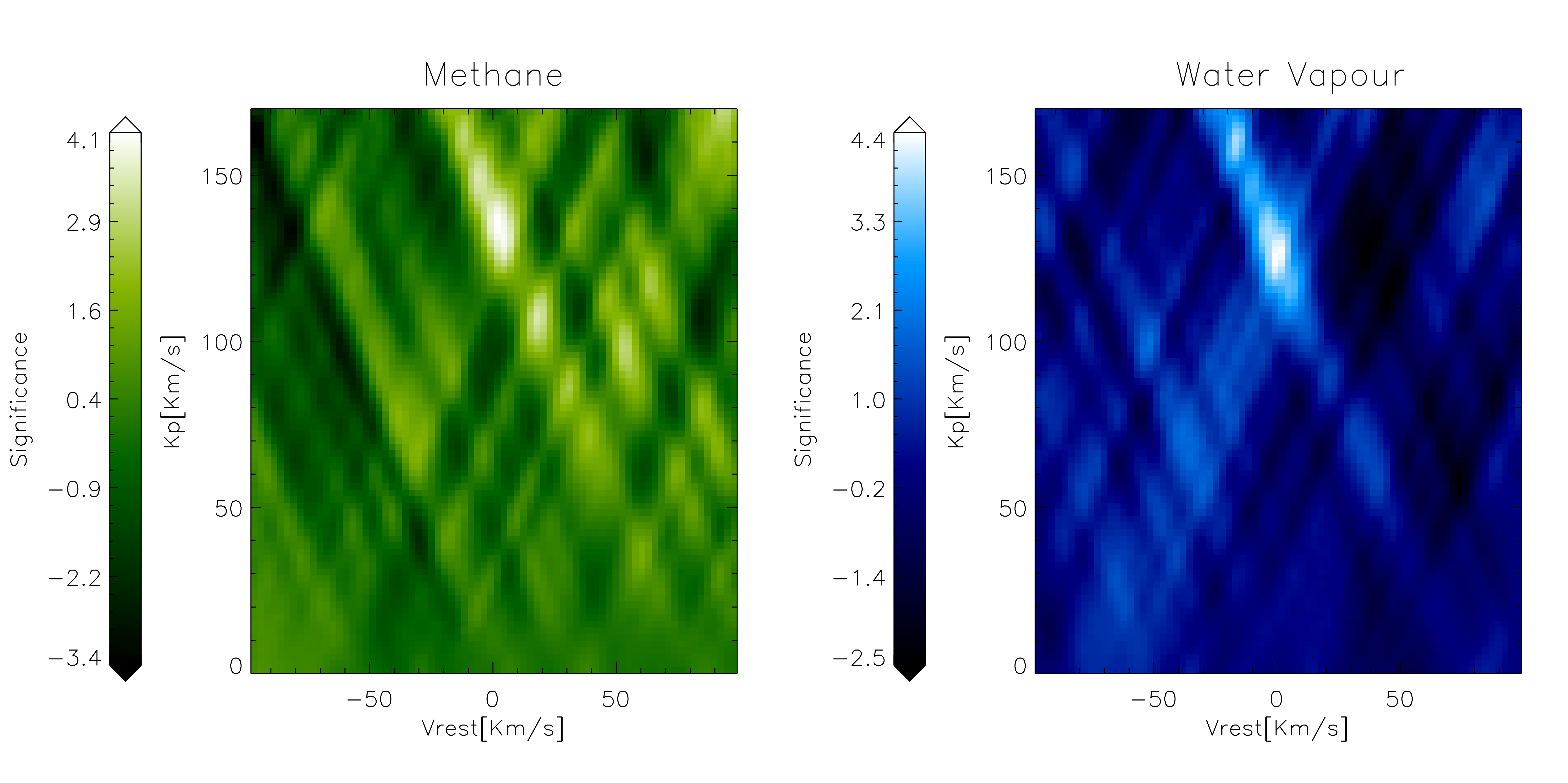Giano detects methane for the first time in the atmosphere of a hot Jupiter
After the detection of water vapor in the atmosphere of the exoplanet HD 189733b (Brogi et al, 2018) a new success comes for the Telescopio Nazionale Galileo (TNG): the first methane detection in the atmosphere of the hot Jupiter, named HD 102195b. HD 102195 b is a non-transiting planet discovered in January 2006 orbiting its host star with a period of about 4.1 days and at a distance 8 times smaller than the Mercury-Sun one.
When the planet is at the maximum distance from Earth, around the superior conjunction, we can see its disc almost fully illuminated by HD 102195. In such a way we can study the spectrum emitted by the planetary dayside, and by comparing it to theoretical spectra we can understand the molecular constituents.
Astronomers have observed this exoplanet during three nights on March 2016 using the infrared high-resolution spectrograph GIANO mounted at the TNG, in its initial configuration. They have detected water vapor, and, for the first time in the atmosphere of a hot Jupiter, with the high-resolution technique, methane. "This is a nice shot for GIANO because, in past studies, methane had been sought in the atmospheres of exoplanets using both low- and high-spectral-resolution data, but without clear success." says Gloria Guilluy, Phd Student at the Observatory of Turin, and lead author of the paper that soon will be published on the Astronomy and Astrophysics magazine.
Working with a high resolution as GIANO does, we have two advantages. First of all, the molecules features are resolved into a dense forest of individual lines in a pattern that is unique for each given molecule, so molecular species can be robustly identified by line matching with planetary models. Secondly, the high resolution of GIANO allows us to detect a shift in the planetary spectrum caused by its motion around the host star. This enables us to distinguish between the planetary signal and the contamination of the Earth’s spectrum that remains stationary during the observations.
"This research is a turning point for the atmospheric characterization of non-transiting planets. Indeed, until now, this type of studies has been conducted mainly by using spectrographs mounted on 8- and 10-m class ground-based telescopes. Now we have demonstrated that also smaller telescopes could success in characterizing the atmosphere of non-transiting planets" concludes Gloria. "Finally, since HD 102195b is one to three magnitudes fainter in the K band respect to the non-transiting systems studied until now, this work opens up the possibility for atmospheric characterization of a larger sample of exoplanets".
 The figure shows the total cross-correlation signal performed between the GIANO spectra and the models
containing CH4 (left panel) and H2O (right panel). The two signals i.e., the white tracks crossing the figure,
have been detected with a high significance level (4.1, 4.4 respectively).
The figure shows the total cross-correlation signal performed between the GIANO spectra and the models
containing CH4 (left panel) and H2O (right panel). The two signals i.e., the white tracks crossing the figure,
have been detected with a high significance level (4.1, 4.4 respectively).

